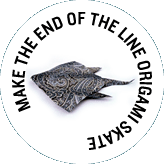Scientists say the population of Atlantic bluefin tuna has crashed so low that an immediate ban on international trade in the species is justified.
Scientists from the International Commission for the Conservation of Atlantic Tunas (ICCAT) said that spawning stocks of bluefin have fallen below 15 per cent of what they were historically on both sides of the Atlantic.
Their analysis said that that a suspension of commercial fishing was the only measure which would take the bluefin – which has become the symbol for many of European and Atlantic nations’ failure to manage their fisheries - out of the category of qualifying for a trade ban within a decade.
The scientists met in Madrid, Spain from Oct 21-23 to assess current stock status of Atlantic bluefin tuna against the specific criteria necessary to list a species under Appendix I of the Convention on International Trade in Endangered Species (CITES) – which would trigger a trade ban.
Earlier this month, the Principality of Monaco submitted a CITES Appendix I listing proposal to temporarily ban international commercial trade and allow the species to recover from years of ineffective fisheries management and control.
The official assessment of bluefin’s extreme stock decline was welcomed by the environment groups WWF, Greenpeace and the Pew Environment Group.
“What’s needed to save the stocks is a suspension of fishing activity and a suspension of international commercial trade – this is the only possible package that can give this fish a chance to recover,” said Dr Sergi Tudela, head of fisheries at WWF Mediterranean.
“We must stop mercilessly exploiting this fragile natural resource until stocks show clear signs of rebound and until sustainable management and control measures are firmly put in place.”
“The ICCAT scientists have made formal what we have been saying all along – that Atlantic bluefin tuna is balancing precariously on the edge of collapse, and only drastic measures can now ensure this endangered species gets a fighting chance of recovery,” added Sebastian Losada of Greenpeace International.
“The extent of the failure by ICCAT members to act responsibly and preserve our marine environment can no longer be ignored.”
The verdict of the scientists will be submitted to ICCAT nations who will decide whether they will support an immediate trade ban or whether they will grant a quota for next year at their meeting next month in Recife, Brazil.
“Independent of what ICCAT decides to do in November, the science is undeniable that Atlantic bluefin tuna meets the criteria for a suspension of trade through a CITES Appendix I listing – and if ICCAT stops the fishing too, so much the better for this species,” said Dr Susan Lieberman of The Pew Environment Group.
“Atlantic bluefin tuna has been subject to decades of massive overfishing and overexploitation and time is running out to save this species.”
WWF, Greenpeace and The Pew Environment Group are calling on ICCAT to impose a zero quota next month. Interest will focus on what ICCAT does with the advice of its own scientists; in the past, the advice of ICCAT’s scientists has been largely ignored.
The next conference of the 175 members of the CITES treaty, meanwhile, is in Doha, Qatar, in March 2010, when WWF, Greenpeace and the Pew Environment Group are calling on members to vote in favour of an Appendix I listing for the bluefin.

The movie that changed the way people think about what’s on their dinner plate makes its TV debut tonight – Tuesday October 20.
The End of the Line film was being screened by More4 at 10.00pm and is the latest stage of its incredible journey.
Among its many other milestones is an unprecedented four week run in London’s West End, a screening at the Sundance Festival and dozens of special screenings at subsequent festivals.
There have also been special screenings for European royalty including Prince Albert of Monaco and the Queen of Spain.
It was on screen as the UK’s first online seafood restaurant guide www.fish2fork.com was launched this week with the backing of some VIP supporters.
Sarah Brown, the Prime Minister’s wife, said on Twitter: “The End of the Line, the brilliant, watchable film on fish is on More4 at 10.00pm tonight and sustainable fish restaurant guide www.fish2fork.com”.
There was a similar message from author, actor and green activist Stephen Fry, who urged his 870,000-strong army of followers to watch the film and to visit the website.
Fish2fork.com aims to rate restaurants not just on the usual criteria of how good their seafood is but perhaps, more importantly, on what impact its capture has on our oceans and marine life.
The online guide has been set up by the same team which turned Charles Clover’s book The End of the Line on over fishing into a hugely powerful film.
Visitors to the site will find information about seafood restaurants across the UK and will be encouraged to ask questions about the fish they are offered when they dine out.
They can then easily upload their own view of the restaurant’s commitment to sustainability onto the website and help give it a simple rating score - blue fish for good and red fish for bad – on a sliding scale.
For its launch the website has reviewed and rated more than 100 restaurants across the UK but is relying on diners to provide their own reviews and help the website grow into an authoritative reference guide.
Within hours of its launch the website was being contacted by fish lovers eager to get involved by nominating restaurants they want to see in the guide.
Fish restaurants were also quick to see the marketing possibilities of being featured on the site and had filled in the www.fish2fork.com questionnaire.

The UK’s first online seafood restaurant guide – www.fish2fork.com – is launched today.

Fish2fork is the UK's first online seafood restaurant guide
The interactive guide aims to rate restaurants not just on the usual criteria of how good their seafood is but, perhaps more importantly, on what impact its capture has on our oceans and marine life.
Visitors to the site will find information about seafood restaurants across the UK and will be encouraged to ask questions about the fish they are offered when they dine out.
They can then easily upload their own view of the restaurant’s commitment to sustainability onto the website and help give it a simple rating score - blue fish for good and red fish for bad – on a sliding scale.
Fish2fork.com, run by the same people who produced The End of the Line, has reviewed and rated more than 100 restaurants initially but is relying on diners to help the website grow into an authoritative reference guide.
Among those who scored bottom in the guide, denoted by five red fish skeletons, included J Sheekey, the restaurant owned by the company that also owns the Ivy and the Caprice, and Nobu, the Japanese fusion chain. Rick Stein, the TV chef, rated half a red fish skeleton, which indicated he served several “fish to avoid.”
The Loch Fyne chain and the Michelin-starred Hibiscus in London’s West End scored joint highest with three blue fish.
The website’s aim is not to persuade people to stop eating fish – quite the contrary – it wants everybody to continue enjoying seafood. But the world’s fish stocks are under pressure like never before and if future generations are to share the same privilege, old habits have to change.
As fish2fork.com editor Charles Clover, revealed in his book on which The End of the Line film was based, as many as 80 per cent of the world’s fish stocks are fully or over-exploited and some fish species, such as the bluefin tuna or the beluga sturgeon, are now listed as critically endangered.
The cavalier attitude to our oceans and the seafood they contain has to change if the appalling prospect of a world without fish is to be avoided. And diners, by making the right choices about the fish they eat, have a powerful economic weapon they can use in bringing about that all-important change.
Fish2fork.com has been set up specifically to help diners make informed decisions before they visit a seafood restaurant on which strive to provide the most sustainable fish to eat and which serve mostly fish to avoid.
Using the International Union for Conservation of Nature (IUCN) Red List and the Marine Conservation Society (MCS) list of species to avoid, the website earlier this summer benchmarked the menus of more than 100 restaurants. They were then contacted and asked to complete a questionnaire so that a rating could be given.
The questions were designed to assess a restaurant’s sourcing policy, for instance, whether it offered wild or farmed fish, whether its shellfish were dredged or whether it offered species of fish which were either endangered or under threat because of over-fishing.
Where a restaurant declined or was unable to complete the questionnaire it was filled in by fish2fork.com staff using its online menu as a source of information.
The survey produced some startling results:
- Almost 90 per cent of restaurants are serving at least one “fish to avoid” species.
- Some Michelin-starred restaurants were amongst the worst offenders and a quarter of those surveyed are serving fish regarded as endangered.
- More than one in three restaurants served three or more species from the “fish to avoid” list.
Charles Clover, the editor of fish2fork.com, said: “Some restaurants still have not grasped that sustainability is now part of the definition of good food. You don’t want to eat a wonderful meal and have nightmares about the species you have pushed a little further towards extinction.
“This new guide shows the wonderful work some chefs and proprietors are doing with fishermen to make sure that they source fish of the highest quality caught in the most selective ways.
“It also shows the awful dark side of gastronomy, chefs who place an ephemeral taste for which they can charge the Earth above the survival of whole species and ecosystems.
“What few people know is that the supermarkets have made huge strides in recent years to get endangered fish off their shelves.
“The trouble is, these species very often remain on the menu at white tablecloth restaurants who haven’t yet had the searchlight of public opinion directed at the dark corners of their menus, where there are some real horror stories.”
Willie Mackenzie, oceans campaigner for Greenpeace UK, said: “As consumers we all have an impact on the oceans every time we eat a forkful of fish.
“We can make a real difference by what we buy, and we need to hold the retailers and restaurateurs to account for their fish sourcing policies. If we want to eat fish in years to come, then we have to radically overhaul the way we are fishing today – and your fork is the front line.”
Sam Wilding, the Marine Conservation Society’s fisheries officer, said: “It is encouraging to see Fish2fork highlighting the issue of seafood sustainability to restaurants and chefs, and giving the concerned consumer a voice.
“MCS provides consumers with free advice on seafood sustainability, through our pocket good fish guides and fishonline.org and is pleased to see our advice incorporated into the Fish2Fork campaign.”
Visitors to fish2fork.com can download the same questionnaire used in the survey to rate their own restaurant. Alternatively, they can ‘rat’ on a restaurant they suspect of malpractice, or ‘pat’ a restaurant they think deserves recognition by sending a quick email.
The website also features a ‘widget’ which will enable visitors to look up and check the conservation status of most species of fish they are likely to encounter in a restaurant.
For more information go to www.fish2fork.com.

![]()



